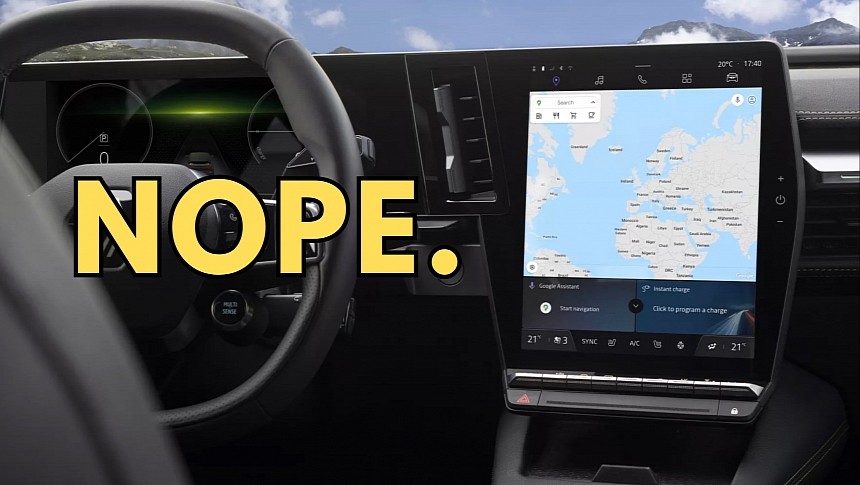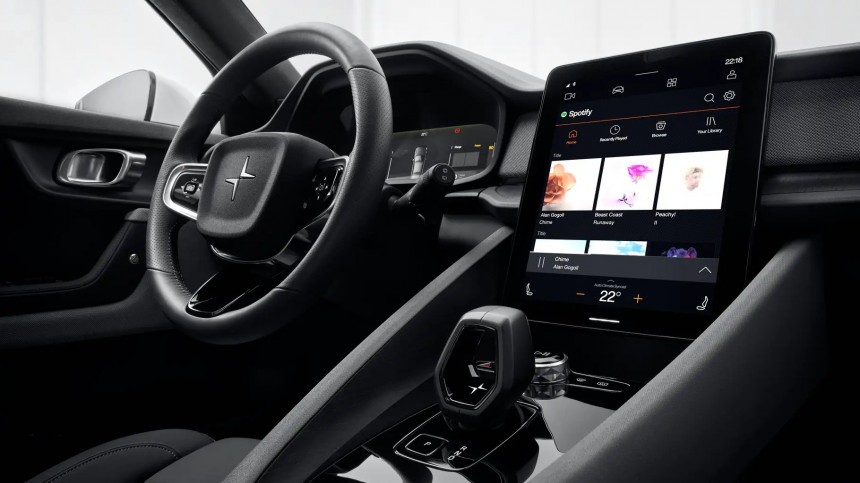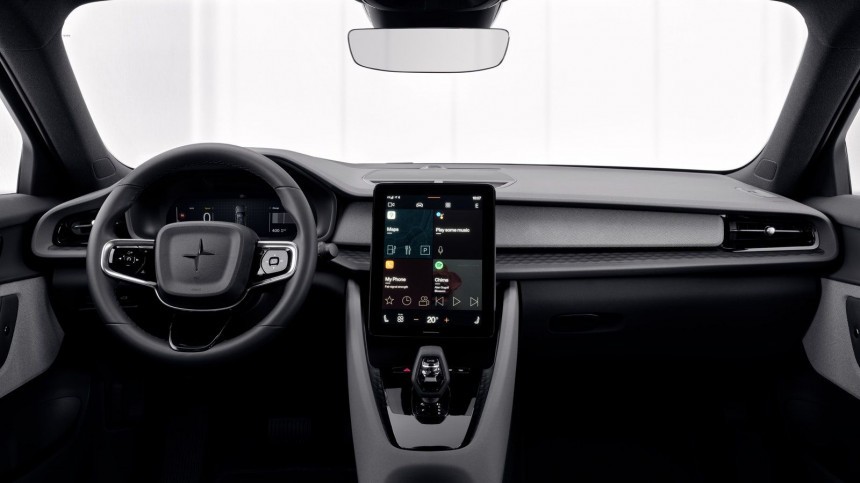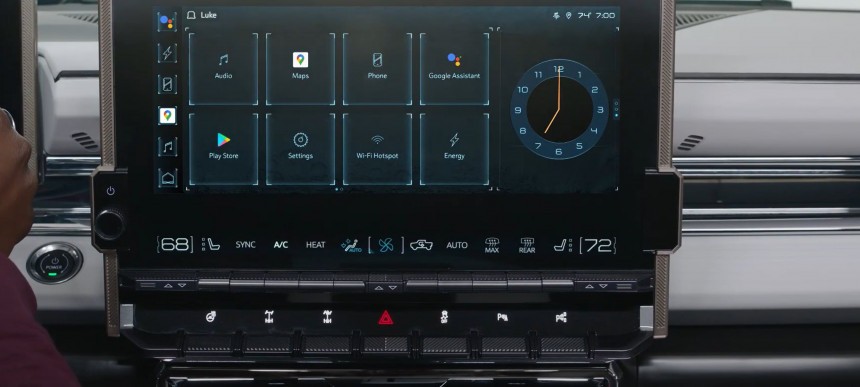On paper, Android Automotive looks like an evolved version of Android Auto, with advanced capabilities that aren't technically possible on a phone projection system.
Android Auto works with a connection between the phone and the head unit, so what you see on the screen is a mirrored interface from the mobile device. Android Automotive does not require a phone to run. It's the operating system powering the infotainment capabilities and is installed from the factory at the vehicle level.
Compared to Android Auto, Android Automotive has access to more vehicle functions and can read essential information, such as the battery level and the estimated range.
Google is pushing hard for Android Automotive, as the operating system is integral for its long-term automotive push. However, after using AAOS for a week, I'm ready to return to Android Auto. And I believe many people would feel the same if they used Android Auto for a long time and made the switch to Android Automotive.
The first thing that makes Android Auto the better option than Android Automotive is the way it works. Android Auto runs on the mobile device, so when you turn off the engine and leave the car, all the data goes with you.
Android Automotive keeps everything locally, and while you can log in with a Google account to allow some data to roam across the devices, this functionality is still very limited. With Android Auto, you'll have everything with you all the time. If you use Waze for navigation and want to explore a route from the comfort of your sofa, you can do this easily and then have the trip history on the device when you get in the car.
My phone has replaced many of my laptop's tasks, and I use it for payments, storing my ID, and other things that make simple things even simpler. As a result, I'd rather have my phone power the infotainment experience rather than get a fully integrated Google operating system in charge of the same thing.
You'd think that not having to plug in the phone every time you get behind the wheel is much more convenient. While the statement was true, I found myself plugging in the phone anyway, as I still needed to charge the battery almost every time I got in the car. Eventually, connecting the phone to the car is a common thing, so you won't get extra convenience points in this regard if you move to Android Automotive.
While Google wants AAOS to be a fully featured operating system, the platform still feels half-baked. I admit it comes with several advanced features, such as the Google Maps routing system that takes into account the current range and automatically suggests charging stops, but most apps are either unavailable or come with big limitations on Android Automotive.
Waze is living proof. While it sounds awkward, considering it's a Google-owned app, Waze for Android Automotive is almost a joke. You must log in with the same account as on the mobile device, and some settings rely on the configuration you do on the smartphone. The Android Automotive integration is basic and feels like it never received the attention such a popular application deserves.
Eventually, I believe Android Automotive isn't there yet. The debut of the new-generation CarPlay next month will likely breathe new life into Google's efforts on this front, as Apple's software will represent the most advanced alternative the search giant could get.
Android Automotive will continue to increase its adoption in the automotive industry, but with CarPlay fighting for the same audience, it'll be harder for Google to boost its market share without major improvements.
In the meantime, Android Auto is ready to serve as your daily driving companion with a larger app ecosystem and familiar features that most people love. Everything feels more natural on Android Auto (and it makes sense given the system has been around for many years, so we're familiar with the way it works), but I learned that the bells and whistles bundled with Android Automotive are not the major selling points they seem to be at first glance.
The good thing is that Google will continue pushing harder in the automotive world with AAOS and Android Auto. The two platforms will live side by side in the company's automotive strategy, though I expect the operating system to receive more attention in the long term.
The reason is as simple as it could be: it gives Google access to what it craves: data. Android Automotive sports deeper integration into the vehicle, so the search giant can access more car information and learn a lot about driving habits, how people use its software, and so on. Data is a money-making machine, and Google knows this best, so it's a matter of time until Android Automotive spearheads its automotive efforts.
Compared to Android Auto, Android Automotive has access to more vehicle functions and can read essential information, such as the battery level and the estimated range.
Google is pushing hard for Android Automotive, as the operating system is integral for its long-term automotive push. However, after using AAOS for a week, I'm ready to return to Android Auto. And I believe many people would feel the same if they used Android Auto for a long time and made the switch to Android Automotive.
The first thing that makes Android Auto the better option than Android Automotive is the way it works. Android Auto runs on the mobile device, so when you turn off the engine and leave the car, all the data goes with you.
Android Automotive keeps everything locally, and while you can log in with a Google account to allow some data to roam across the devices, this functionality is still very limited. With Android Auto, you'll have everything with you all the time. If you use Waze for navigation and want to explore a route from the comfort of your sofa, you can do this easily and then have the trip history on the device when you get in the car.
You'd think that not having to plug in the phone every time you get behind the wheel is much more convenient. While the statement was true, I found myself plugging in the phone anyway, as I still needed to charge the battery almost every time I got in the car. Eventually, connecting the phone to the car is a common thing, so you won't get extra convenience points in this regard if you move to Android Automotive.
While Google wants AAOS to be a fully featured operating system, the platform still feels half-baked. I admit it comes with several advanced features, such as the Google Maps routing system that takes into account the current range and automatically suggests charging stops, but most apps are either unavailable or come with big limitations on Android Automotive.
Waze is living proof. While it sounds awkward, considering it's a Google-owned app, Waze for Android Automotive is almost a joke. You must log in with the same account as on the mobile device, and some settings rely on the configuration you do on the smartphone. The Android Automotive integration is basic and feels like it never received the attention such a popular application deserves.
Android Automotive will continue to increase its adoption in the automotive industry, but with CarPlay fighting for the same audience, it'll be harder for Google to boost its market share without major improvements.
In the meantime, Android Auto is ready to serve as your daily driving companion with a larger app ecosystem and familiar features that most people love. Everything feels more natural on Android Auto (and it makes sense given the system has been around for many years, so we're familiar with the way it works), but I learned that the bells and whistles bundled with Android Automotive are not the major selling points they seem to be at first glance.
The reason is as simple as it could be: it gives Google access to what it craves: data. Android Automotive sports deeper integration into the vehicle, so the search giant can access more car information and learn a lot about driving habits, how people use its software, and so on. Data is a money-making machine, and Google knows this best, so it's a matter of time until Android Automotive spearheads its automotive efforts.













